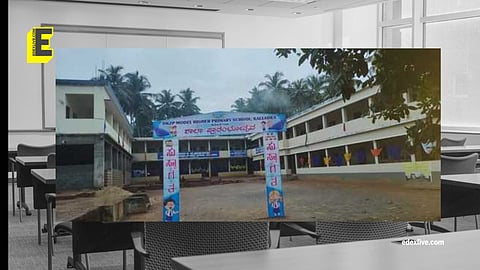

The school began in 1893, in the name Local Fund School is now celebrating 130 plus years of existence and has the strength of more than two private institutes in the region, serving as a role model to all government educational institutions.
Amidst the busy roads of Kalladka in Bantwal taluk in Dakshina Kannada district of Karnataka, exists DKZP Model higher primary school. Like the majority of government institutions, this school at Kalladka, too, witnessed an admission decline, stated a report by The New Indian Express.
The drastic change in student demography from 2001 to 2012, gave the school staff and the headmaster a hint.
"We pondered over the reason for the decline in admission. By 2012, the students strength had reached 210, and it was alarming," said Headmaster Aboobaker Ashraf.
In order to keep the historical legacy of a century-old school alive, English medium education in Class VIII was initiated, giving the school short-term relief from admission decline.
A special spoken English training was provided to the students in order to ease their first time learning experience in English.
In the 2019 budget of the state government, enabled the Kalladka gov't primary school to avail permission to begin English medium school and parallel to the existing curriculum new English medium class for LKG, UKG and Class I was started. It was essential to have a modern infrastructure and amenities in the school campus to attract the parents and assure them the quality of education.
"Being a government employee, I come in contact with people on a daily basis; the feedback I got from the people encouraged me to shift my children from a private institute to a government school. It is not easy to avail seats in Kalladka primary school; I had to book the seat for my daughter in the month of January to avail admission for the next academic year, which began in June," shared the parent Saraswathi N, who has two children in the family studying in the same institute.
The government school, which once had an average student range of 200, is now running successfully with over 862 children and 16 teaching staff competing with the private institutions in the region.
The admission of English medium here closes by March and seats are limited. The lack of teacher resources is still an issue, but the administration is successfully managing it by recruiting teachers by means of donors.
"Our student strength till class eighth is over 800, which is more than the strength of class tenth of two of the private institutions in the regions," the headmaster beamed with pride.
